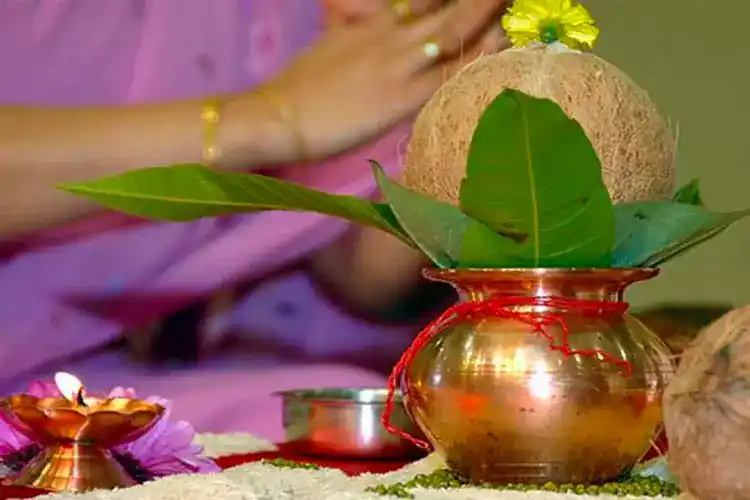Ghatasthapana: Why Its Marks The Navratri Festival?

Navratri is a nine-day-long festival dedicated to Goddess Durga. It is celebrated four times during the Hindu lunar year. The four Navratris are Chaitra Navratri, Shardiya Navratri and the two Gupt Navratri. The Navratri festival begins with a ritual called Ghatasthapana or Kalash Sthapana. This tradition of setting up a Kalash or Ghat is a way to invite Maa Durga into the house. It is also believed that the Kalash represents auspiciousness, good luck, energy, and power. Read on to know the Sharadiya Navratri Ghatasthapana Muhurta, method, and other details on the first day of Navratri.
Ghatasthapana Puja Samagri
We need the following stuff for Navratri Ghatasthapana 2024.
- Statue or picture of Goddess Durga
- Vermilion
- Saffron
- Camphor
- Barley
- Incense sticks
- Clothes
- Mirror
- Comb
- Bracelet
- Bangle
- Scented oil
- Bandanavar of Mango leaves
- Red colour flowers
- Durva to replace Ghatasthapana or Maa Durga
- Rosemary
- Bindi
- Betel nut whole
- Betel leaves
- Turmeric lump and ground turmeric
- Patra
- Chauki (seat)
- Roli
- Flowerpot
- Belpatra
- Kamalgatta
- Lamp
- Naivedya
- Honey
- Sugar
- Panchmeva
- Mace
- Coconut
- Sand
- Clay
- Cloves
- Cardamom
- Urn made of clay or bras
- Havan material
- Thali for Worship
- White clothes
- Milk
- Curd
- Seasonal fruit
- Mustard white and yellow
- Gangajal
Now you are prepared for Ghathaspathna, but are you ready for the upcoming days? Get a free yearly Horoscope report to know what comes next.
Conclusion
Navratri is one of the most important events in the Hindu religion. And, Ghatasthapna or Kalash shape is one of the most important rituals during Navratri. It symbolises the spiritual connection between a devotee and Goddess Durga. MyPandit wishes you a happy Navratri. May these 9 days bring happiness and positivity to you.
Is everything all right? If not, Talk To Astrologers for guidance. The first consultation with 100% Cashback.






